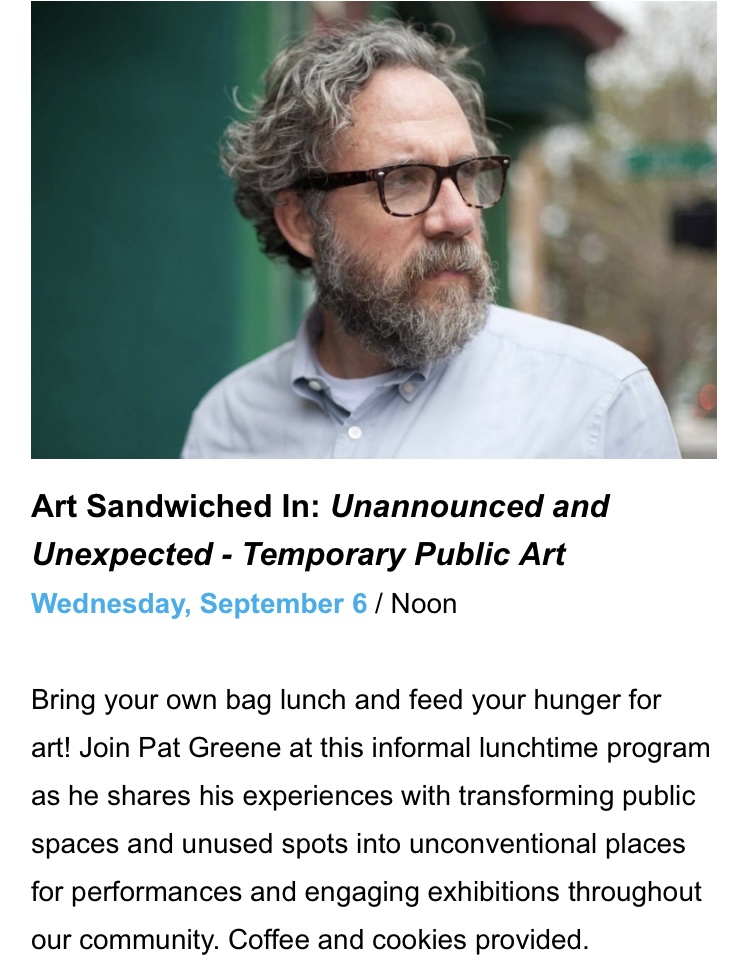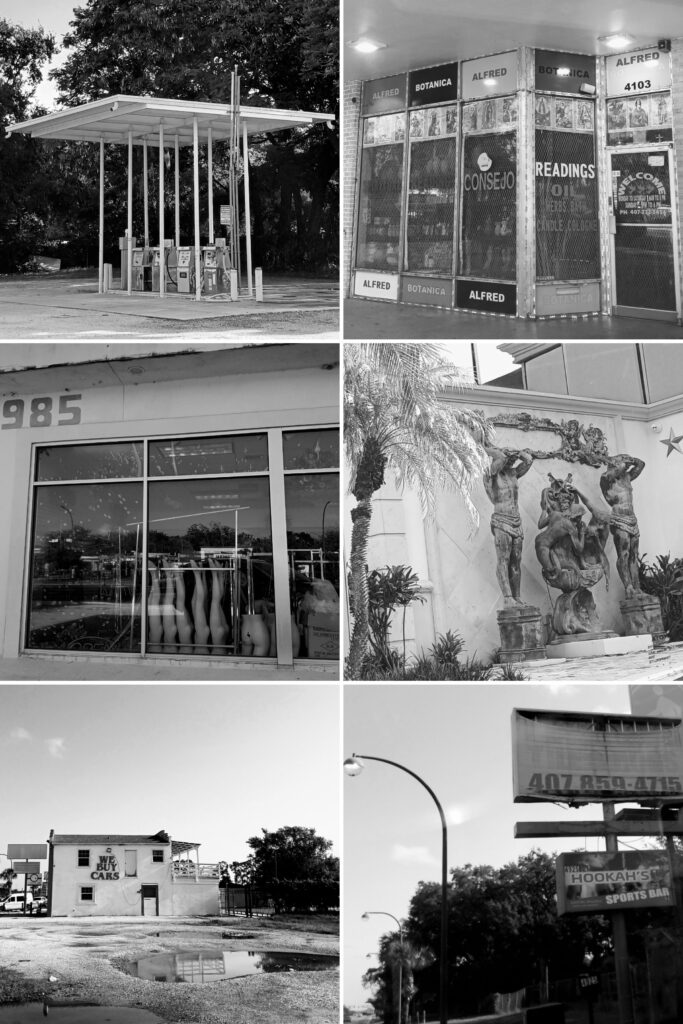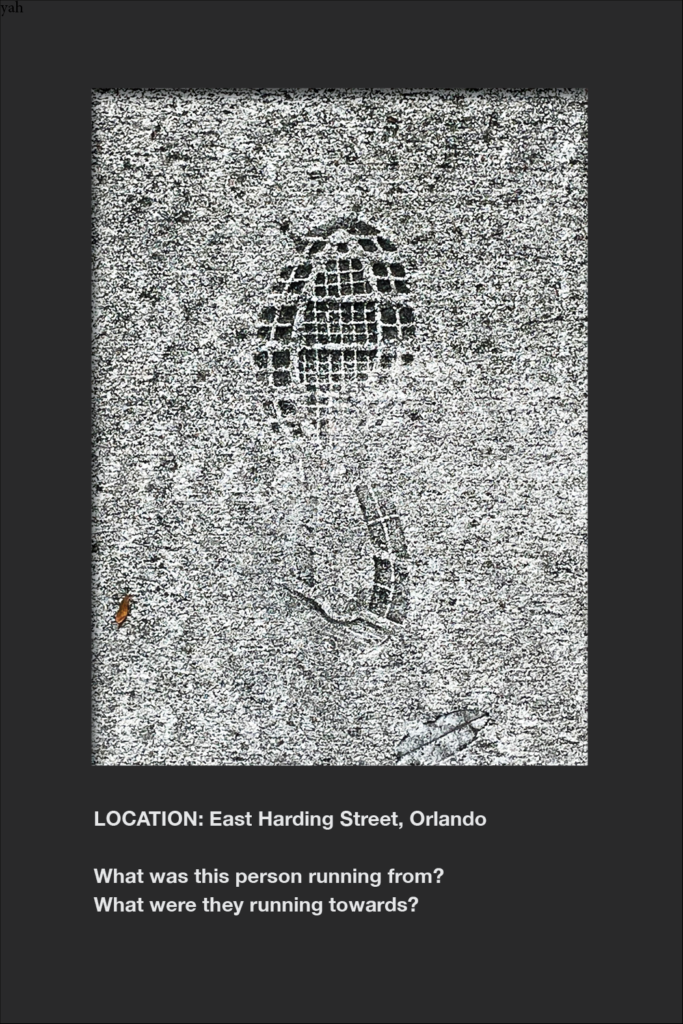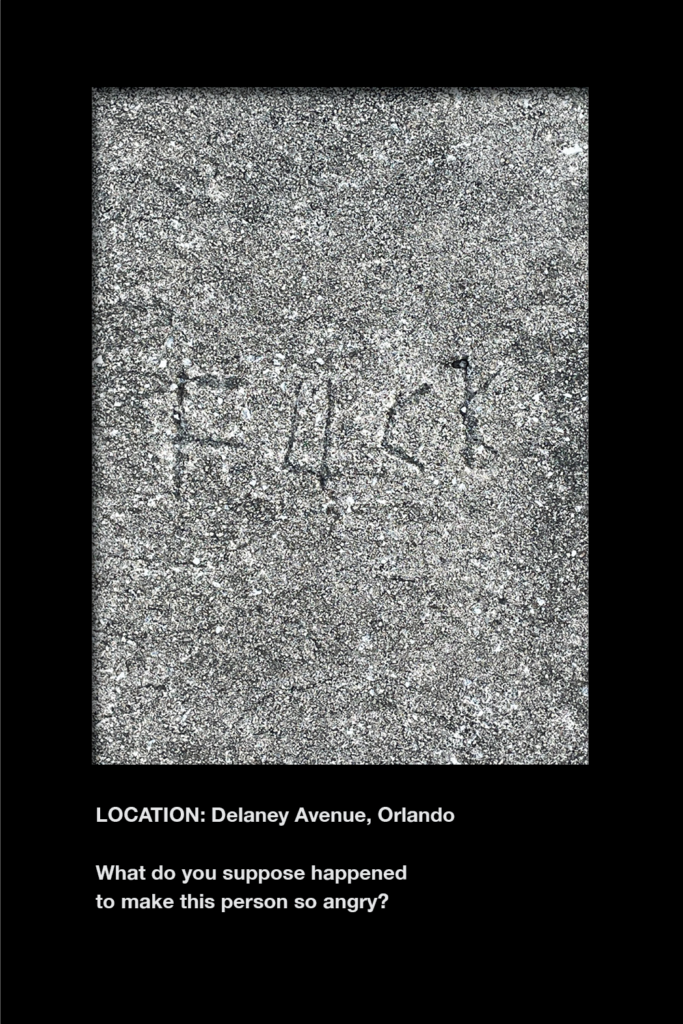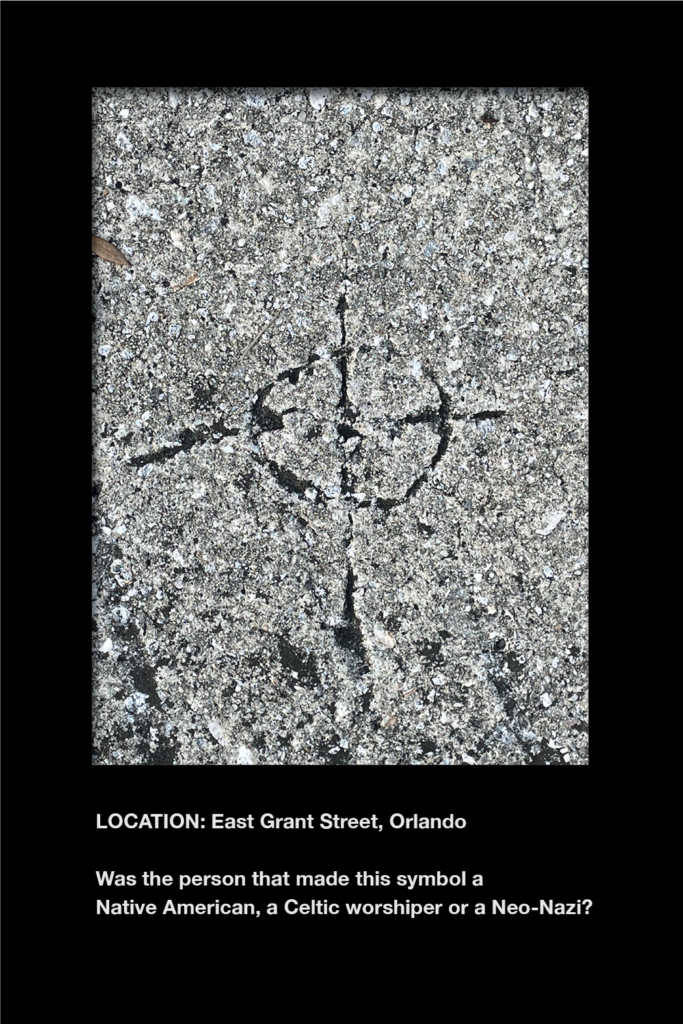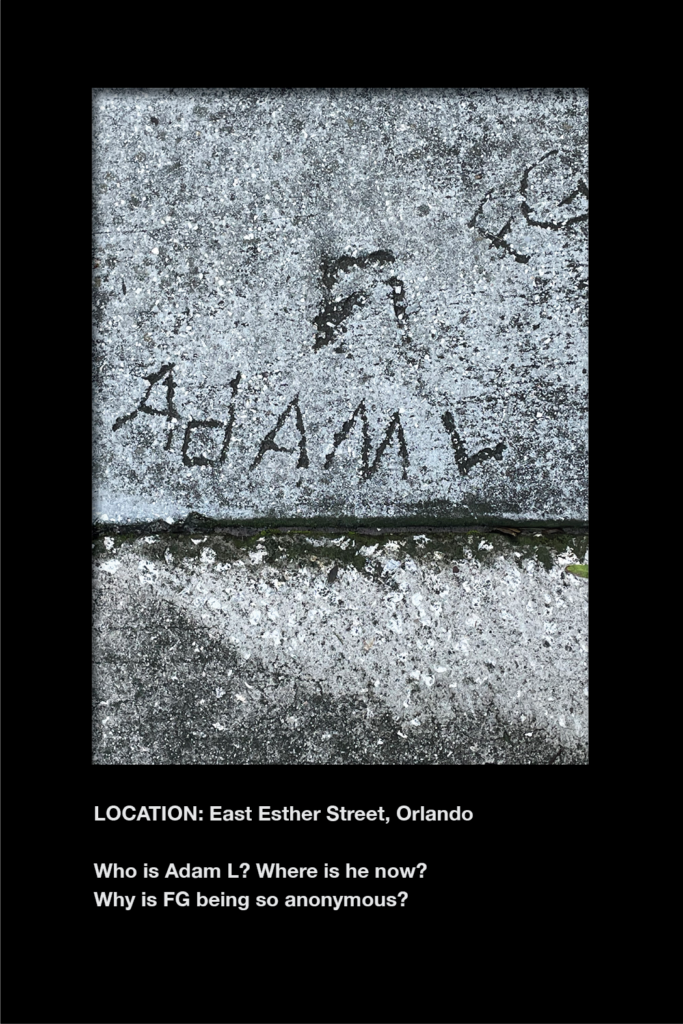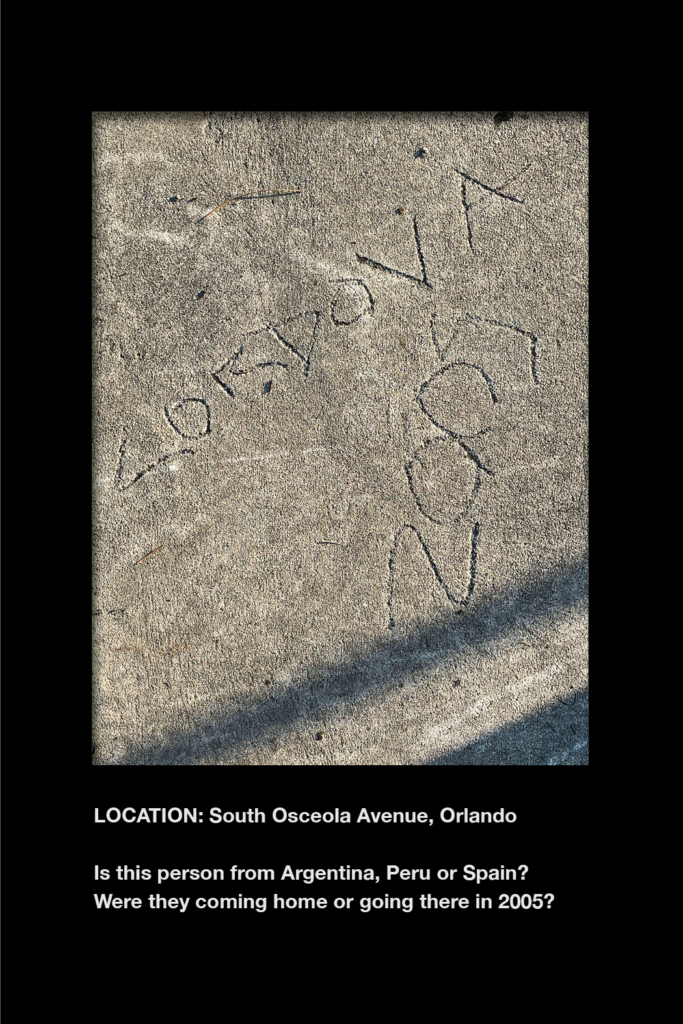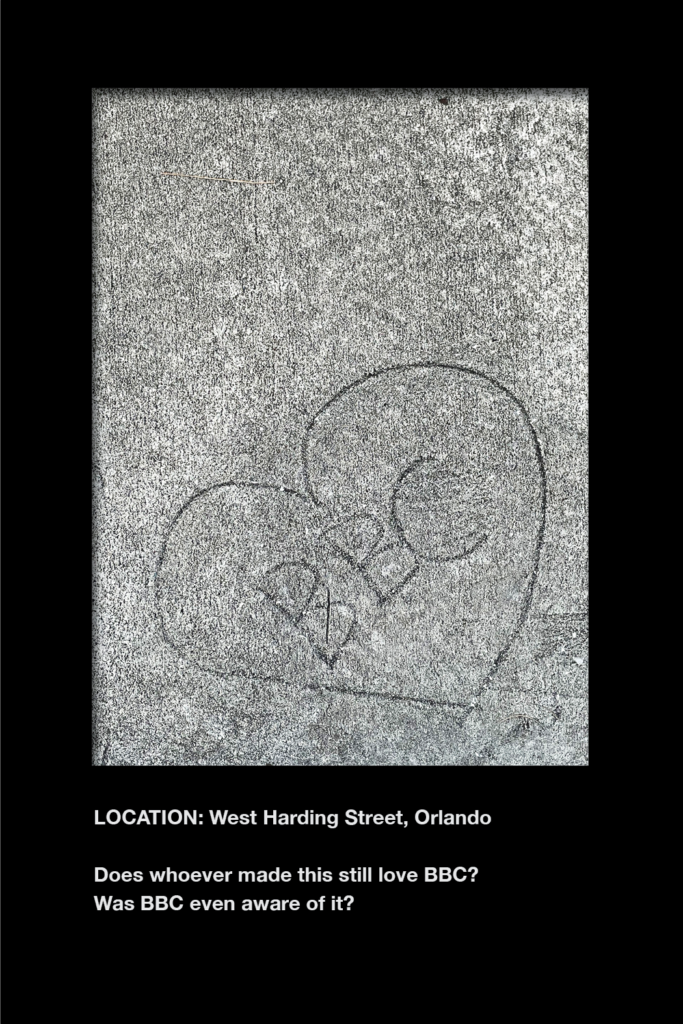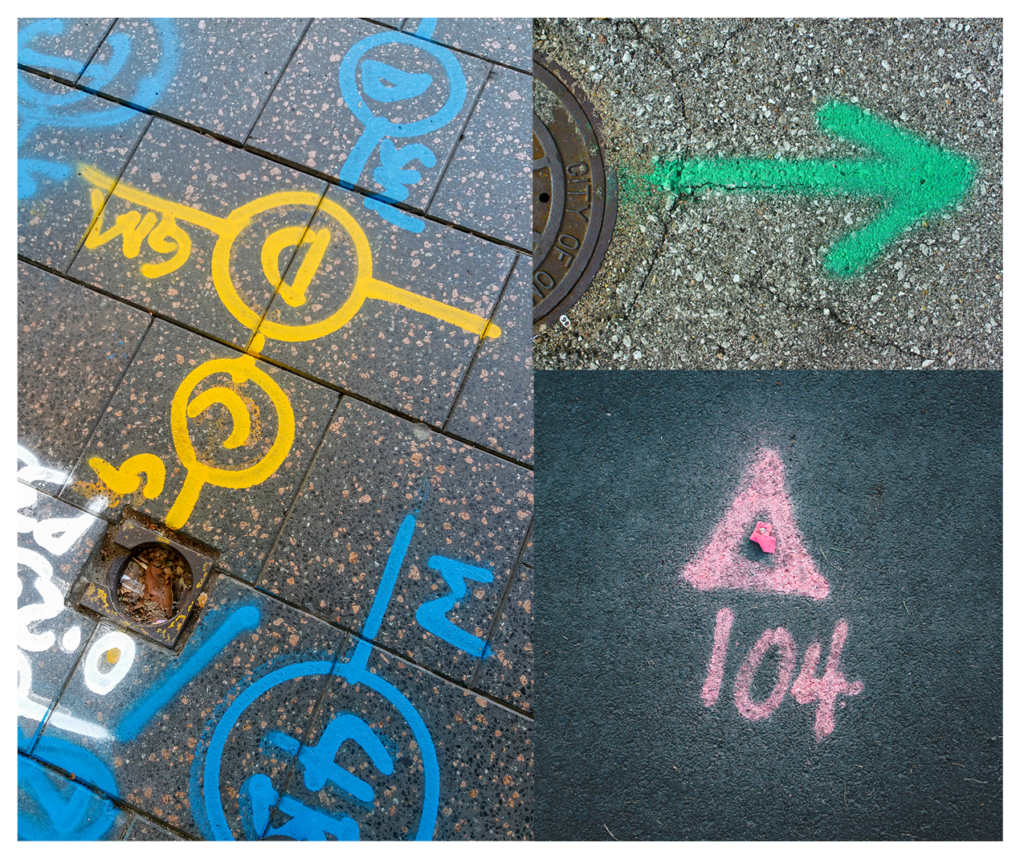
by Jeff Dahlberg
During my many walking excursions around the SODO area I became curious about the spray-painted hieroglyphics and cryptic designations scrawled on sidewalks and roads wherever I happened to be. Their presence can be seen everywhere and yet they blend into the cityscape as though they belong there and have always been there.
I started to wonder about the purpose of this visual noise and couldn’t imagine anyone being able to decipher their meaning. To me they were not unlike a doctor’s bad penmanship found on virtually every prescription ever written for me.
I let my mind wander while imagining a team of city workers adorned with florescent orange vests at 4 a.m., arming themselves with various colors of spray paint and mounting a city utility van to begin the journey to make their mark on the territory. (I have to imagine it because I have never seen anyone actually do this.)
I started researching online and discovered that these writings have a very important purpose in our community mostly centered around public safety.
After disasters that have happened in the past like cutting into gas lines, killing dozens of people and engulfing entire city blocks in explosive flames, the American Public Works Association stepped in to develop uniform color codes for the temporary marking of underground utilities.

Part of me wonders if this a scam to make people think the city is hard at work, maintaining and improving the neighborhood infrastructure. I’ve personally woken up to find my street and sidewalk look like it was attacked by a school bus full of children brandishing spray cans. Yet as the weeks and months pass by, the graffiti gradually fades, and I realize that no work was ever done. But I guess I feel safer.





